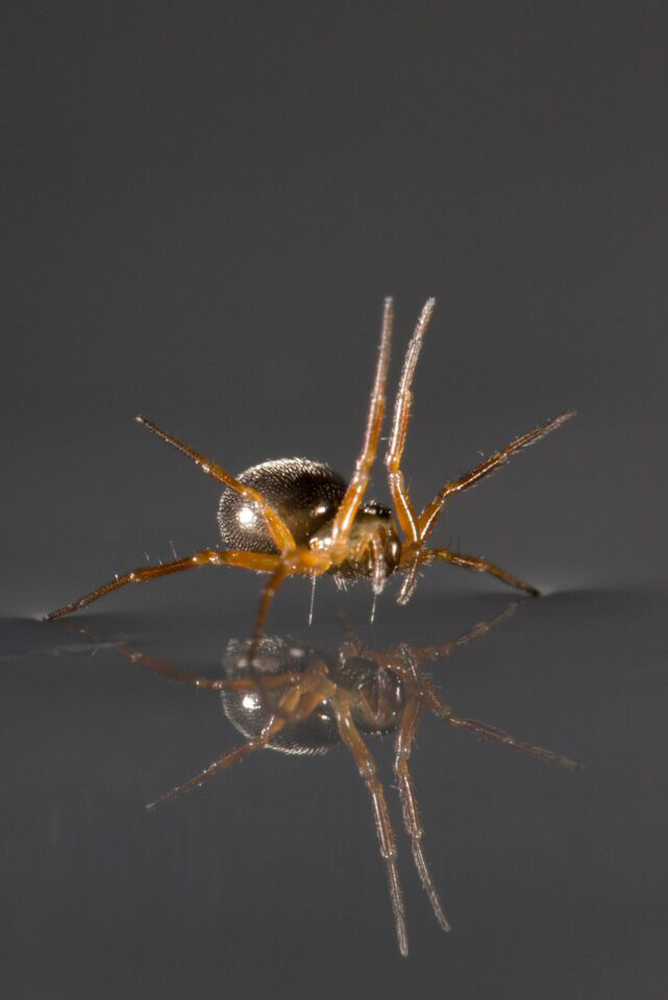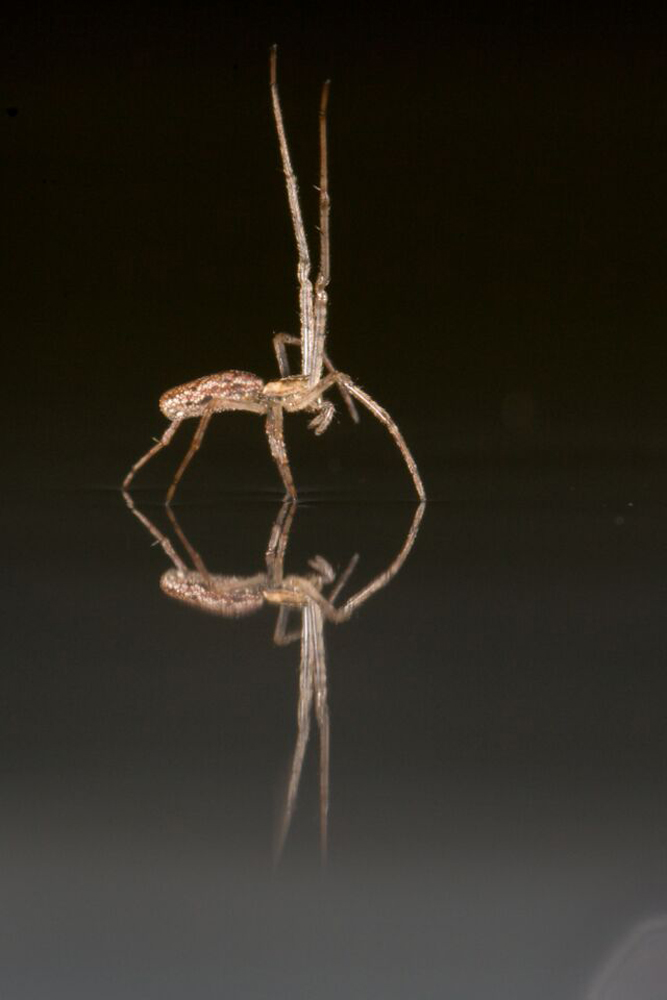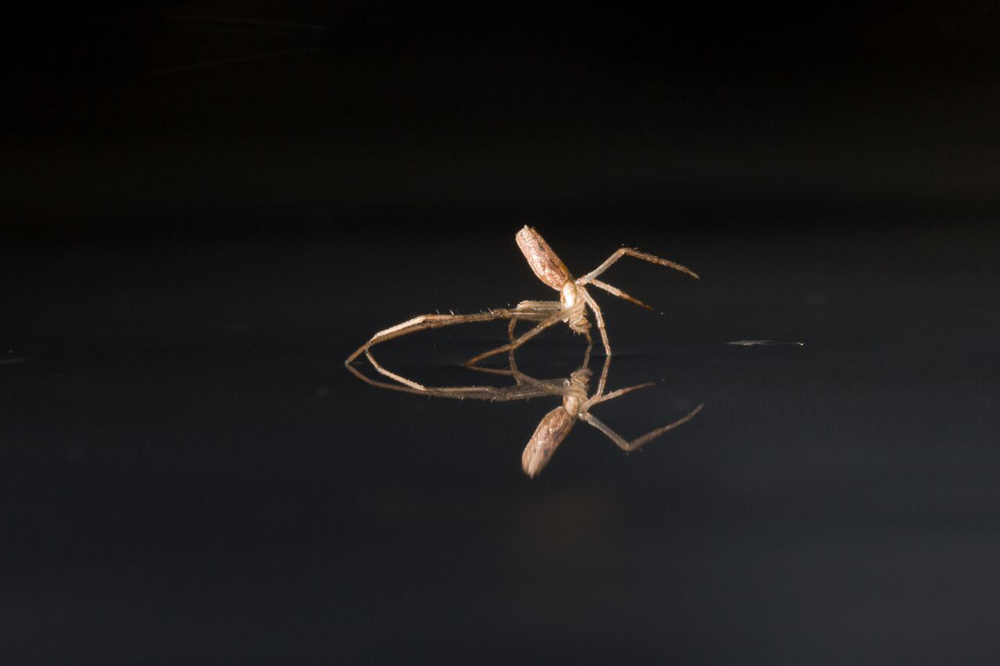In Images: Spiders 'Sail' and 'Dance' on Water
You probably already knew that spiders are extraordinary creatures when they're on land. But a new study finds that these critters are also quite remarkable when they're on the water. Researchers in the United Kingdom recently published a study that found that many species of spiders can actually "sail" across water, using only their body parts and silk to propel themselves forward. (All images courtesy of Alex Hyde) [Read full story about the 'sailing' spiders]
Sea legs
In this photo, a Linyphiid spider sails across the water using its legs. Researchers from the University of Nottingham and the Natural History Museum of London found that spiders who sailed this way were able to travel long distances without creating turbulence.
Taking off
This Tetragnathid spider is also using its legs as sails. Morito Hayashi, team leader of the zoology department at the Natural History Museum of London and lead author of the new study, told Live Science that such spiders look as though they're "skating" over the water.
Making moves
Some of the spiders in the study, such as this Linyphiid spider, sailed using their abdomens instead of their legs.
Get the world’s most fascinating discoveries delivered straight to your inbox.
Preparing for take off
This Tetragnathid spider assumes a "handstand" postion in order to sail using its abdomen.
Safety first
Here, a Tetragnathid spider uses its silk as anchor. The silk drags through the water, slowing the spider down or bringing it to a halt. The researchers also observed some spiders using their silk to "anchor" themselves to a floating object.
Follow Elizabeth Palermo @techEpalermo. Follow Live Science @livescience, Facebook & Google+.





